Hyundai Kona is the newest small crossover that will try to help this Korean car manufacturer to conquer the title of the most successful Asian vehicle brand in Europe. The unusual name, Kona, is geographical as they are Santa Fe and Tucson. But with it, Hyundai wants to conquer the Asian crown in Europe.
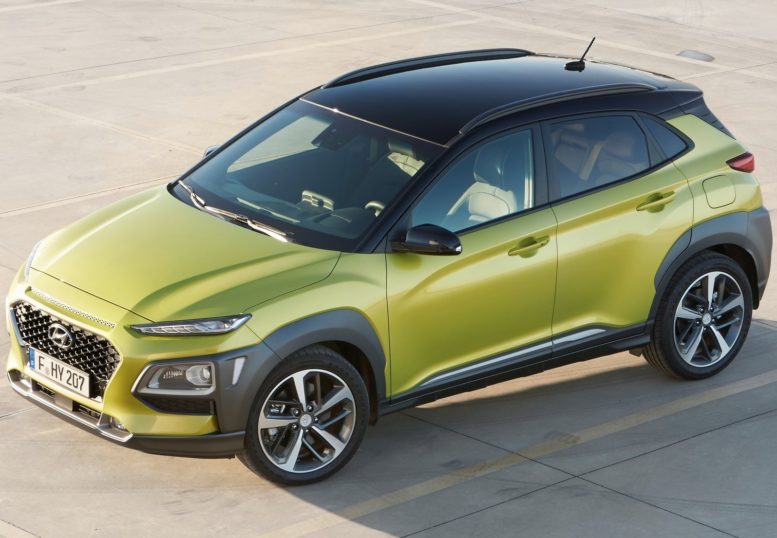
2018 Hyundai Kona steps on the path paved by Nissan Juke.
Kona is actually a smaller place on the largest Hawaiian island, a well-known tourist destination. With Kona, Hyundai is entering the vehicle class started by Nissan Juke. And from the outside, the South Koreans surely followed the Juke, even though they did not go in so extreme direction.
Bold design, although some competitors go even further
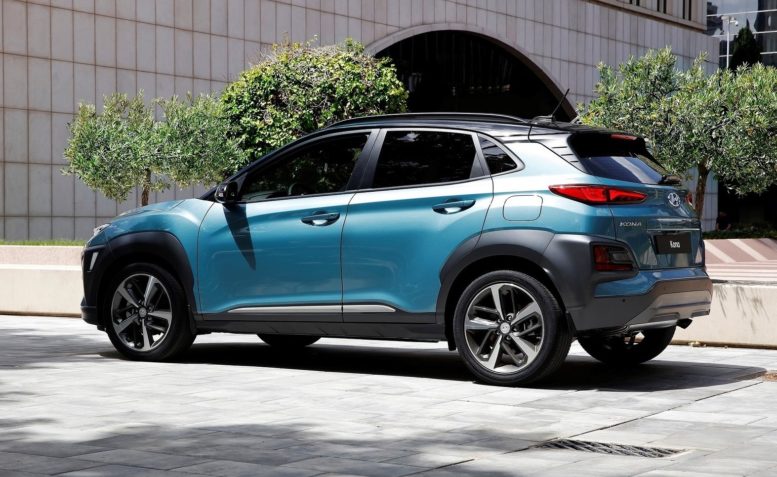
2018 Hyundai Kona exterior design: aggressive front, calmer rear.
The new design of the front with daytime running lights and the turn signals on the edge of the bonnet are definitely a new design approach for Hyundai.
The aggressive appearance of the front part is calmed down with the rest of the bodywork. Therefore from the rear end, Hyundai Kona looks nice and no more aggressive.
The exterior dimensions of Hyundai Kona are quite similar to the main competitors in the class, like Mazda CX-3, Honda HR-V, Toyota C-HR and similar.
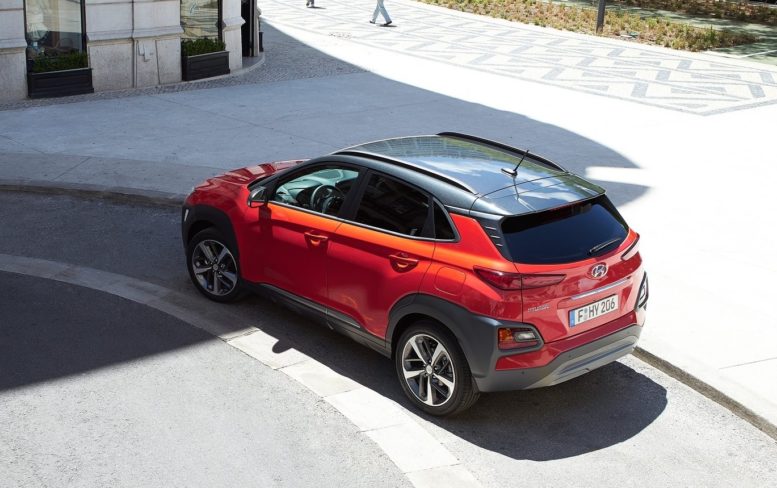
Hyundai Kona dimensions are similar to Mazda CX-3, Toyota C-HR, and Honda HR-V.
There is nothing too surprising in the interior design approach. A fairly subtle design, dominated by a dark plastic mass, which the owners can complement with their own color combinations. Spatiality is certainly better than in Nissan Juke, especially on the rear bench.
Hyundai Kona engines: first petrol, diesel comes later?
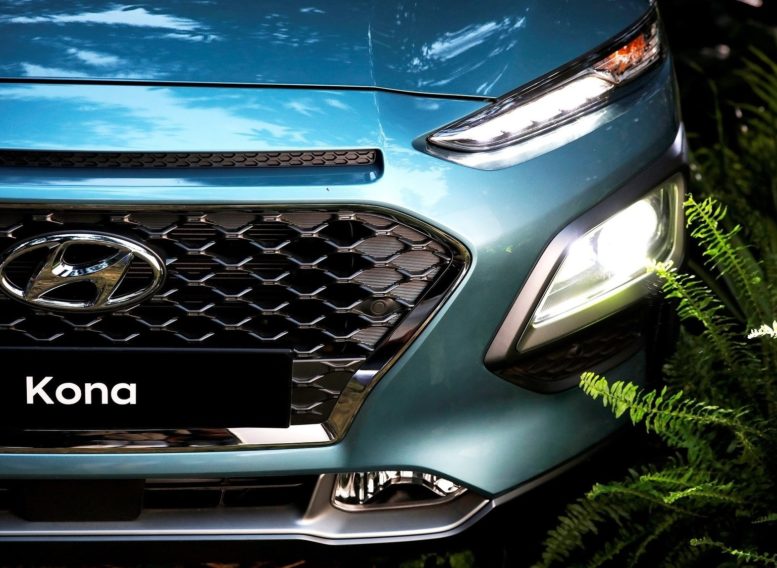
2018 Hyundai Kona engines: petrol in the beginning, diesel and electric or hybrid planned for the next year.
At the beginning of the sale, Hyundai Kona will be available with 1-liter turbo charged petrol engine with 120 hp and a six-speed manual gearbox. The more powerful option will be 1,6-liter turbo charged petrol engine with 177 hp in combination with a seven-speed dual clutch automatic transmission and four-wheel drive. For the US market, another option will be 2-liter petrol engine with 147 hp.
What about diesel engines? Hyundai promises them for next year. For now, most car manufacturers are waiting for the preparation of new standards on the amount of carbon monoxide emissions. After that, it will be more clear what the future of small turbo charged diesel engines will look like.
Anyway, Hyundai Kona announces two versions of the new 1.6-liter turbo diesel – with 115 and 136 hp. A little later, but probably next year, Kona will also receive an electric drive (similar to what we know from Ioniq).
Hyundai Kona has decent ground clearance and four-wheel drive
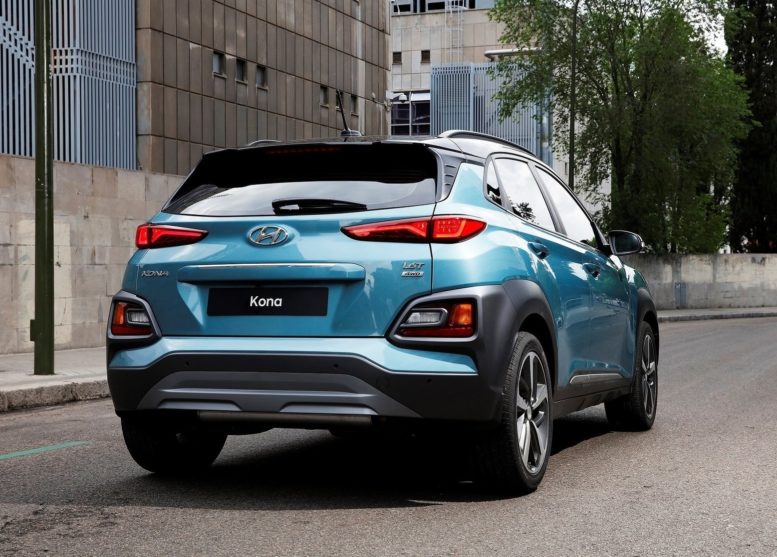
2018 Hyundai Kona offers decent ground clearance of 170 mm and also optional four wheel drive.
Despite its more urban appearance, Hyundai Kona can also be used to drive on the less demanding terrain. Hyundai Kona has a ground clearance of 170 millimeters.
The total weight of Hyundai Kona seems to be a little outside the class average (in the case of a four-wheel drive version), although at Hyundai they claim that they will use solid and light materials from their own Korean factory.
Automatic braking system serial…
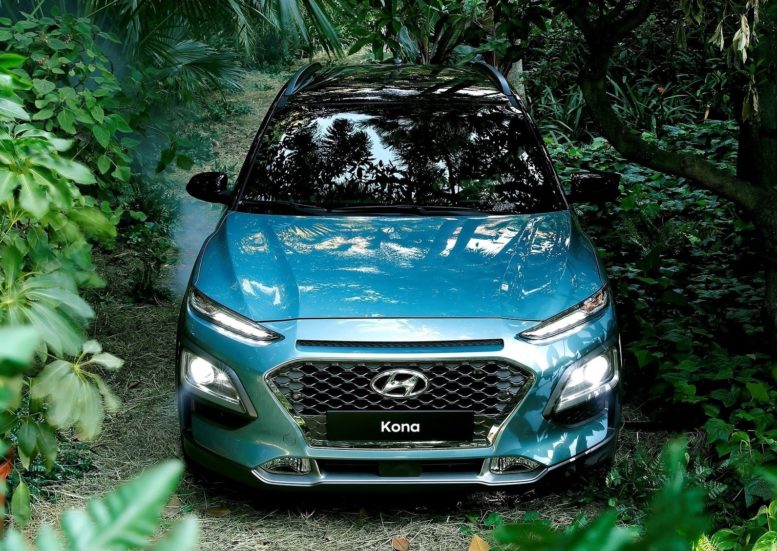
Automatic braking system will be serial in 2018 Hyundai Kona.
Hyundai has announced that it will install an automatic braking system (AEB) in all Hyundai Kona versions. The system will be able to detect ordinary obstacles (cars) and also pedestrians using a camera and a radar sensor in front of the car and will operate on a three-phase basis.
The basis is the driver’s warning (visually and audibly), with the pre-preparation of the brakes depending on the detected probability of collision. If the system finds that the collision is unavoidable, it will automatically brake. It will operate at any speed over eight kilometers per hour.
The remaining security aids will be given to customers at an extra charge, from the lane departure warning system, automatic headlamp shadowing, blind spot detection and the warning of incoming traffic when reversing.
Digital candy in conjunction with the thickness of the wallet
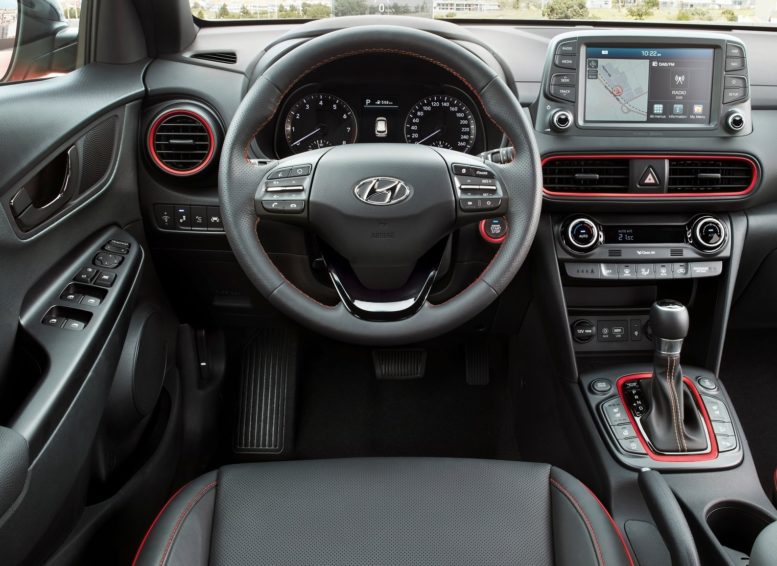
The size of the touchscreen depends on the level of equipment.
Announced equipment for permanent driver connection with the virtual world (well, the Internet) also depends on the level of equipment. As a rule, Hyundai Kona will have a five-inch monochrome display in the center console, which will offer radio, Bluetooth connectivity and AUX and USB sockets.
By selecting the 7-inch color touchscreen, there will be a few additional options, like a backup camera or a smartphone connection (Apple’s and Android’s).
The third option will be an eight-inch color screen. In addition to the options listed in the previous two levels of equipment, the customer will additionally receive a seven-year subscription for Hyundai’s Live service as well as three-dimensional maps for a navigation device with a seven-year continuous updating.
2018 Hyundai Kona release date
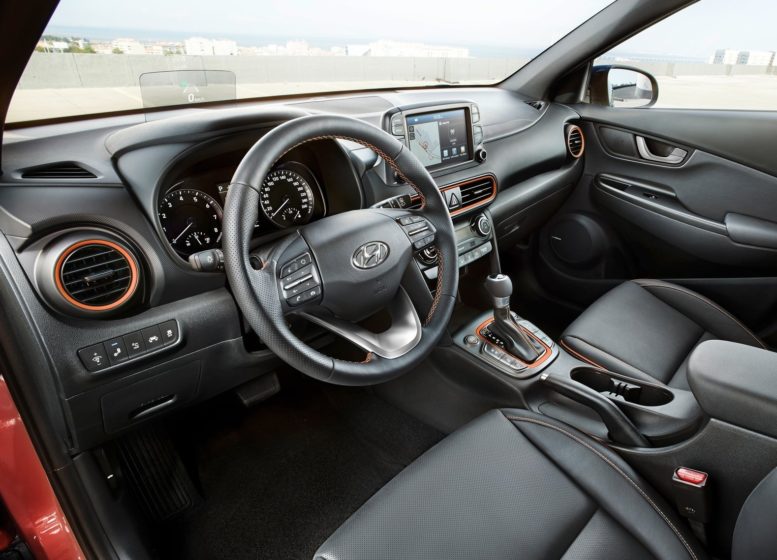
2018 Hyundai Kona release date: in Europe at the end of 2017, in USA in the beginning of 2018.
In its home country, Hyundai Kona will be on sale shortly. In Europe, they are expecting it soon after the automotive exhibition in Frankfurt in September this year, and in the USA in the beginning of 2018.
Hyundai Kona will be another step in Hyundai’s plans to become the leading Asian car maker in the European market by 2021. In order to achieve this, besides Kona, Hyundai plans to present a bunch of other novelties (models and variants). Hyundai claims there will be around 30 of them.
2018 Hyundai Kona technical details
Dimensions
- Length (mm): 4.165
- Width (mm): 1.800
- Height (mm): 1.550
- Wheelbase (mm): 2.600
- Luggage compartment (l): 361 / 1.143
- Ground clearance (mm): 170
Engine options (for now)
Model: 1.0 TGDI
- Maximum power (kW/hp): 88 (120)
- Maximum torque (Nm): 172
- Gearbox, drive: manual, 6-speed / front wheel drive
- Weight of empty vehicle (kg): 1.233
- Maximum speed: 181 km/h
- Acceleration (0-100 km/h): 12.0 seconds
- CO2 emission (g/km): 119
Model: 1,6 TGDI
- Maximum power (kW/hp): 130 (177)
- Maximum torque (Nm): 265
- Gearbox, drive: seven-speed dual clutch automatic transmission, 4-wheel drive
- Weight of empty vehicle (kg): 1.401
- Maximum speed: 205 km/h
- Acceleration (0-100 km/h): 7.9 seconds
- CO2 emission (g/km): 169
Image credit: Hyundai
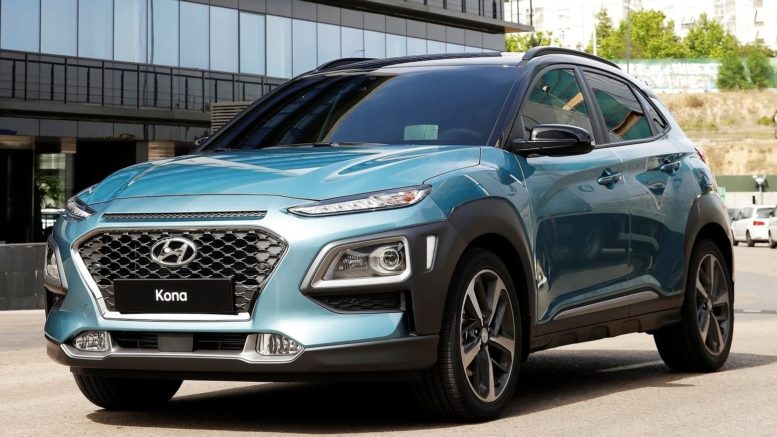

Be the first to comment on "2018 Hyundai Kona review – new South Korean compact crossover"